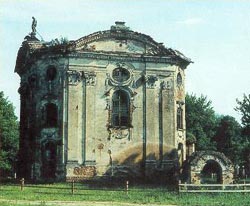
Population – 3,192
Non-wooden buildings - 21
Wooden buildings - 602
Monasteries and convents - 7
Churches - 7
The Great Northern War (1700-1721) of the Polish-Lithuanian Commonwealth and Russia against Sweden was a major setback for the development of Brest-Litovsk. Warehouses with food supplies for the Russian army were set up in Brest. The settlement then was lost to the Swedes who occupied it for several years. This prosperous community was shorn of its wealth and power. Yet, Brest managed to retain the right to self-government as it was the seat of local administrative and judicial authorities.
The first factories were built in Brest in the middle of the 18th century. They included Belarus’ first royal cloth factory (1770-1780) that had 7 looms and 12 spinning wheels and employed 20 people. The manufacture was established with the help of King Stanisław August Poniatowski of the Polish-Lithuanian Commonwealth who took part in Brest sejmiks several times. Poniatowski was born in the Volchin estate in today’s Brest Oblast. The Trinity Church where the last king of the Commonwealth was baptized and buried has survived to this very day.
The defeat in 1794 of the national uprising led by a prominent political and military figure, a native of today’s Brest Oblast Tadeusz Kosciuszko was followed by the Third Partition of the Polish-Lithuanian Commonwealth. In 1795 Brest made part of the Russian Empire. The administrative status of Brest was downgraded, and the town lost its right to self-government. At first it was incorporated into Slonim Province, later Lithuanian Province, and in September 1801 it made part of Grodno Province.





















